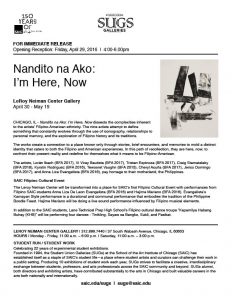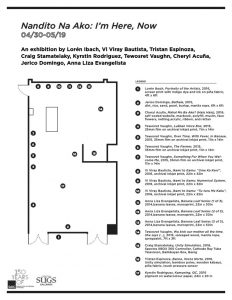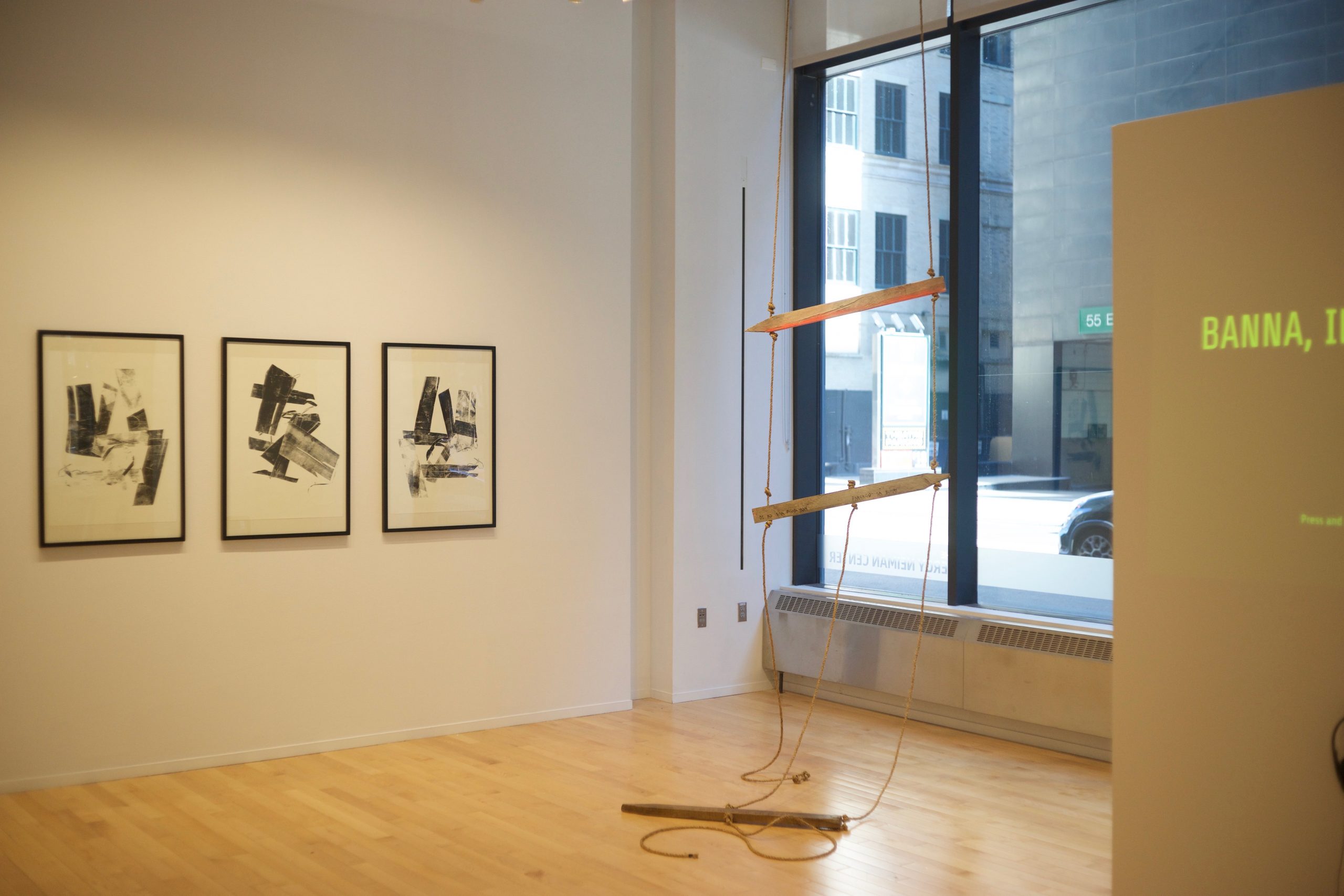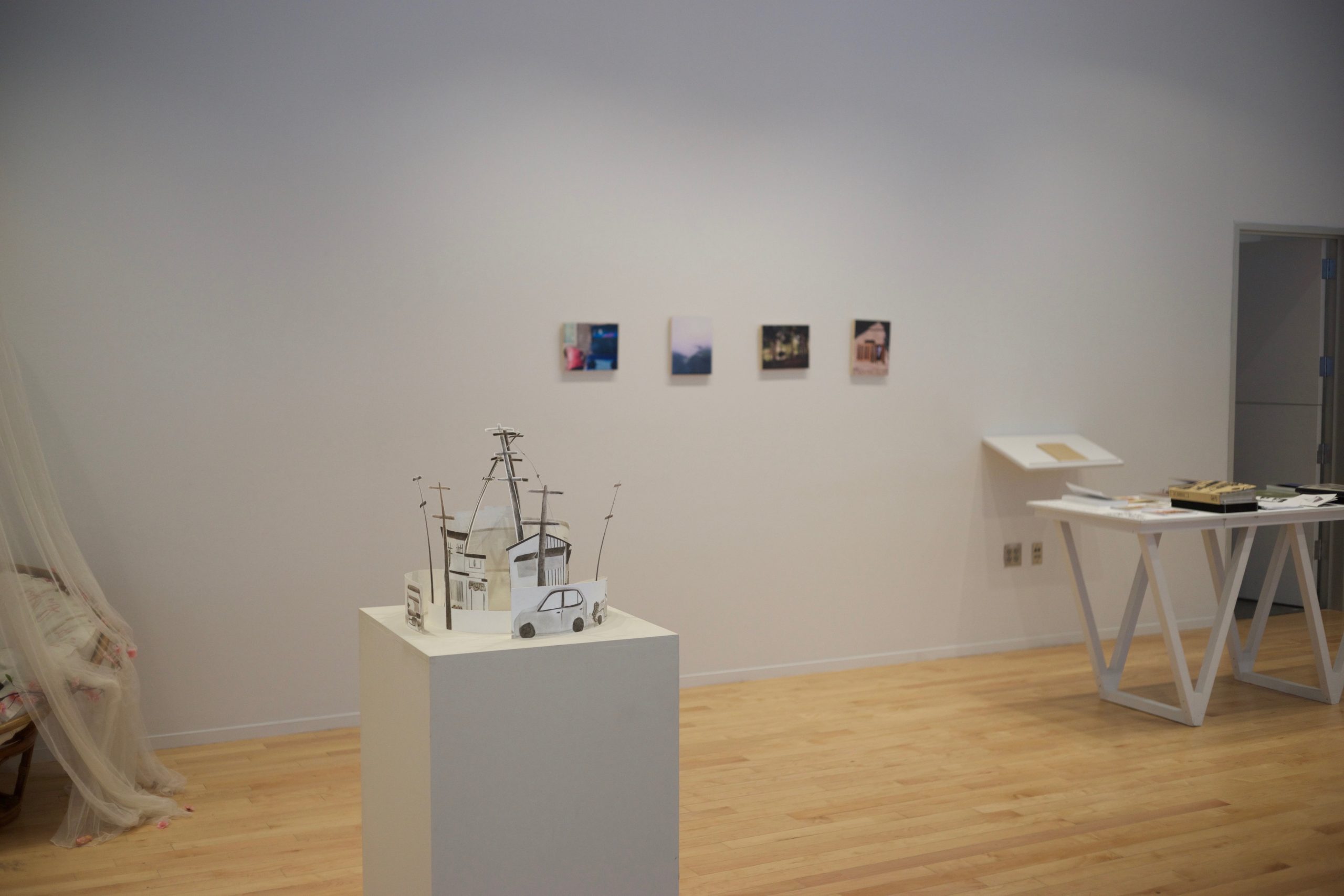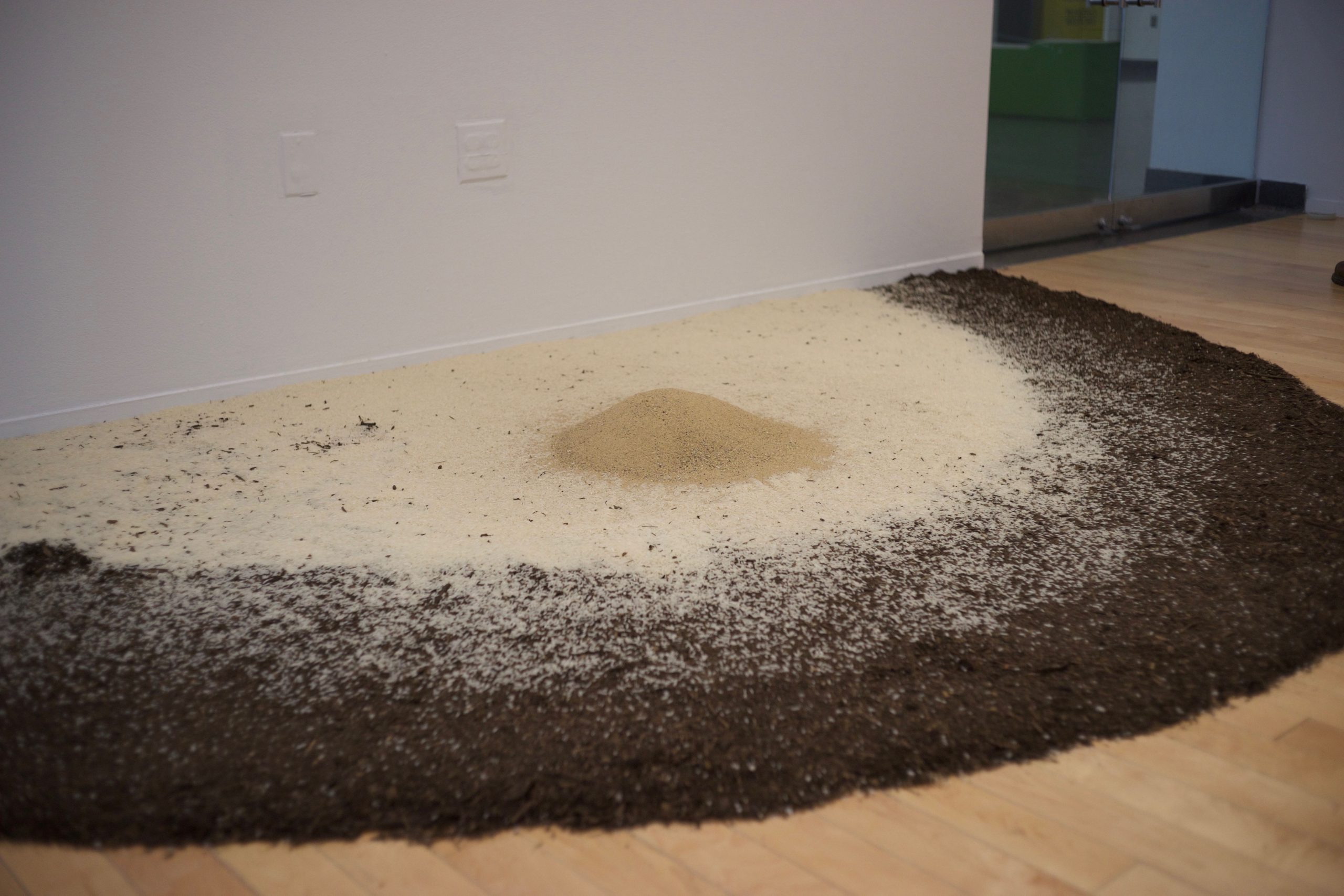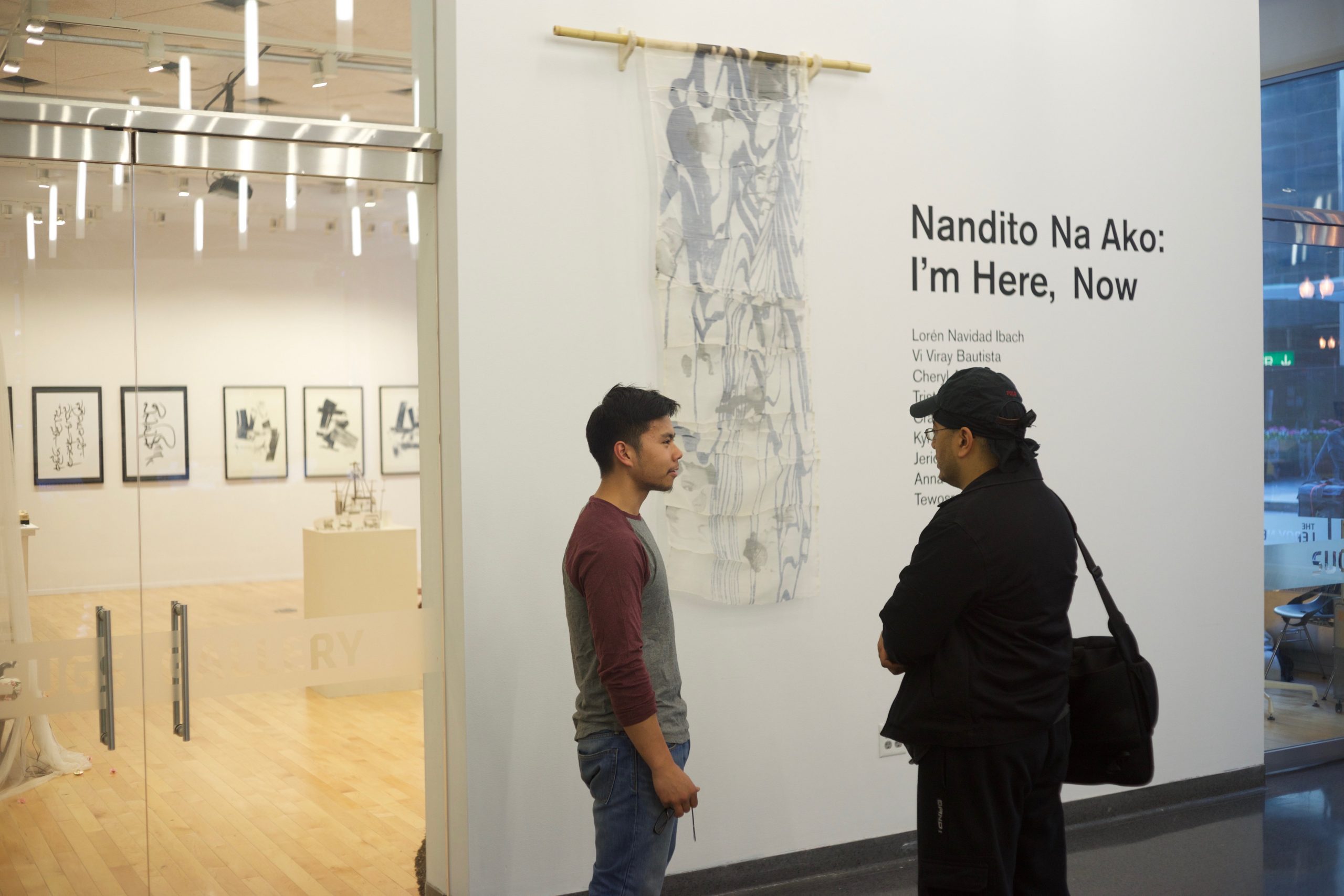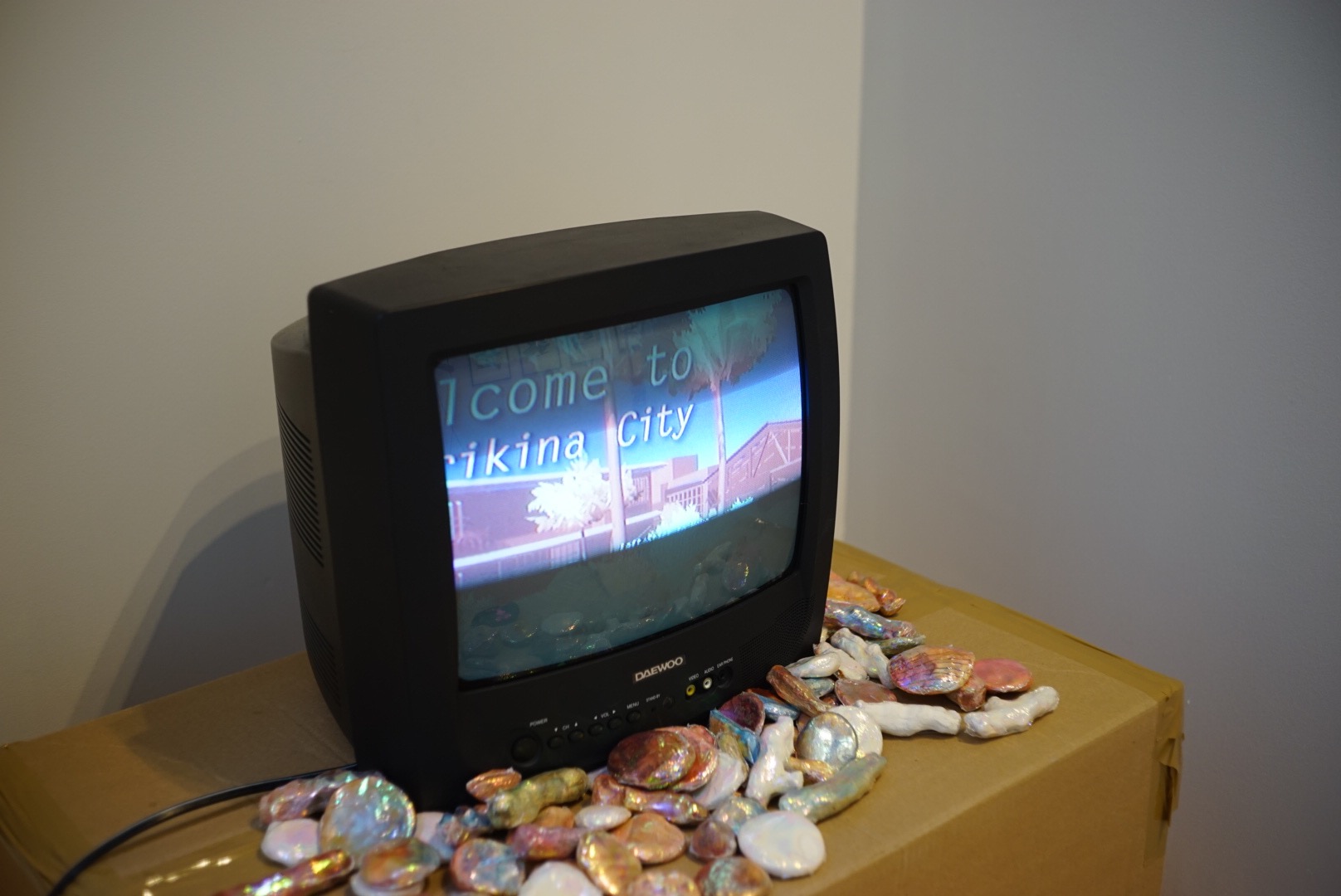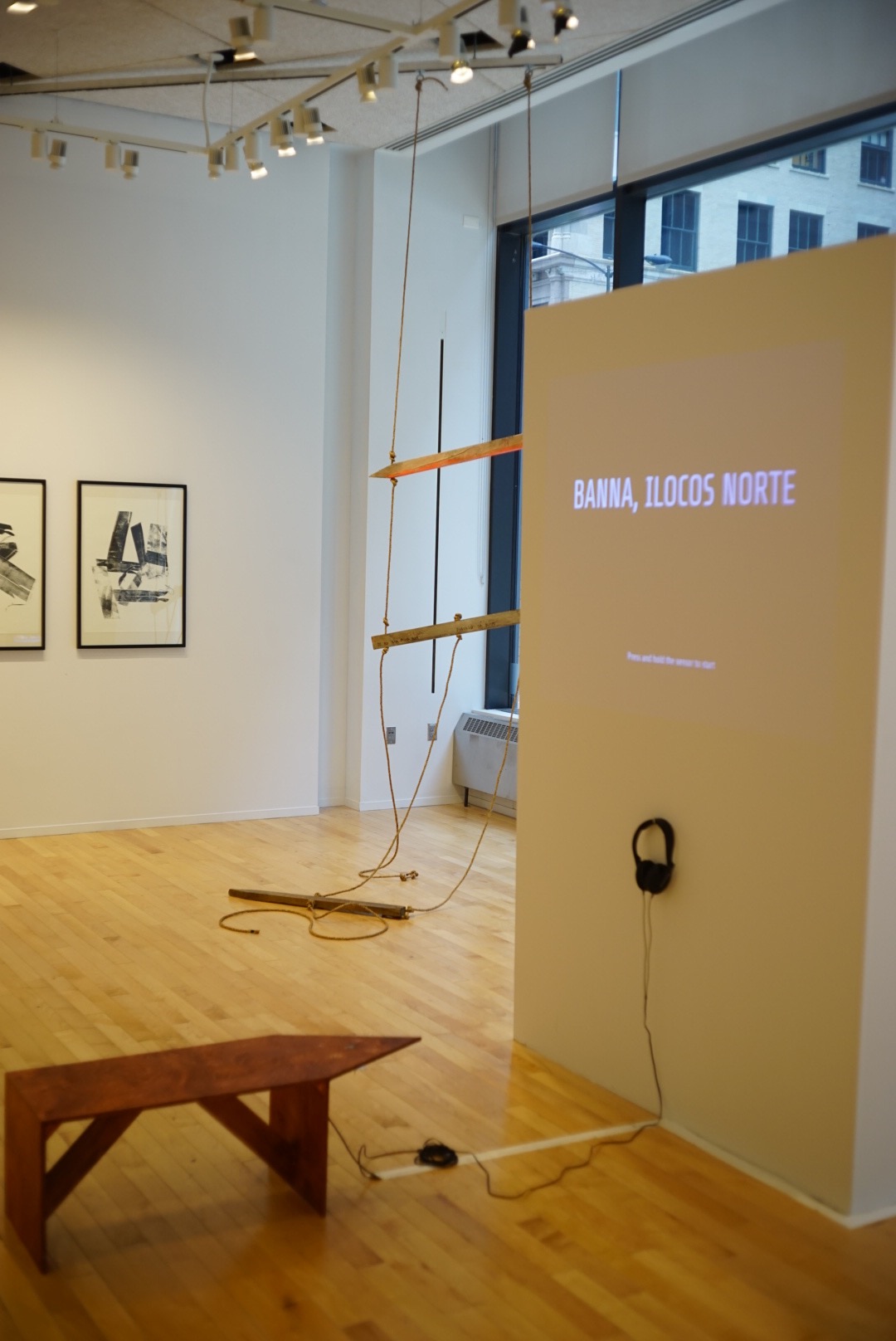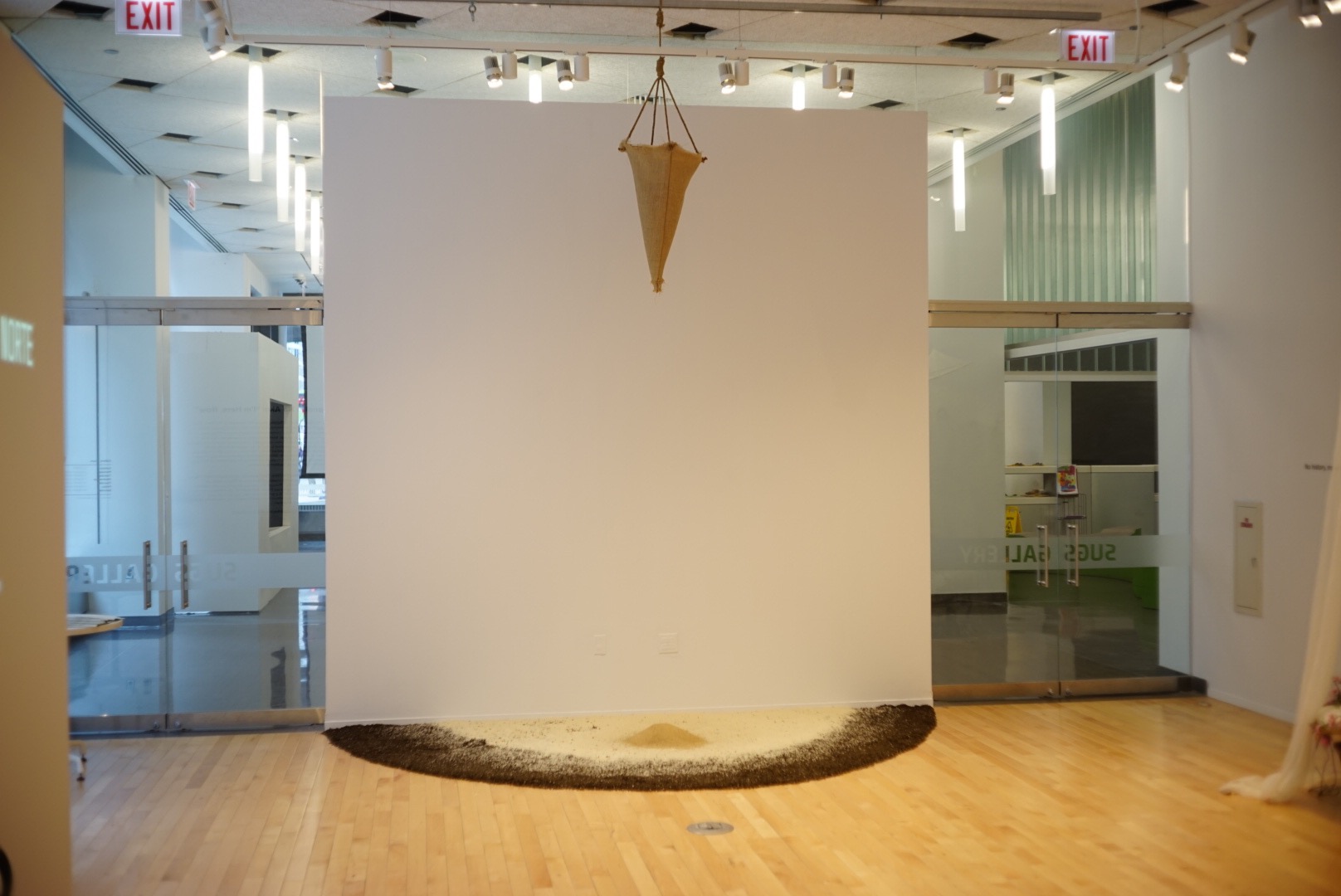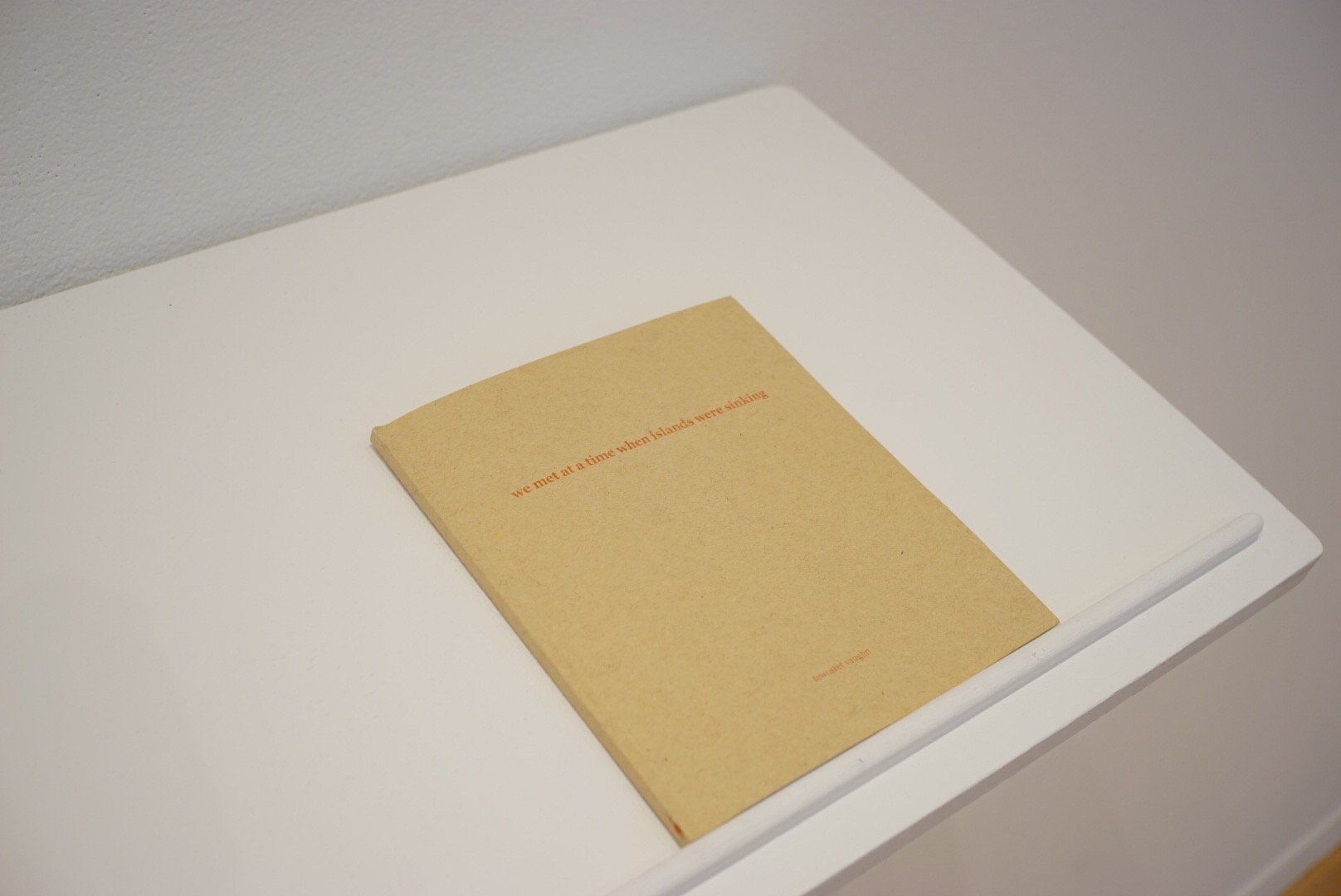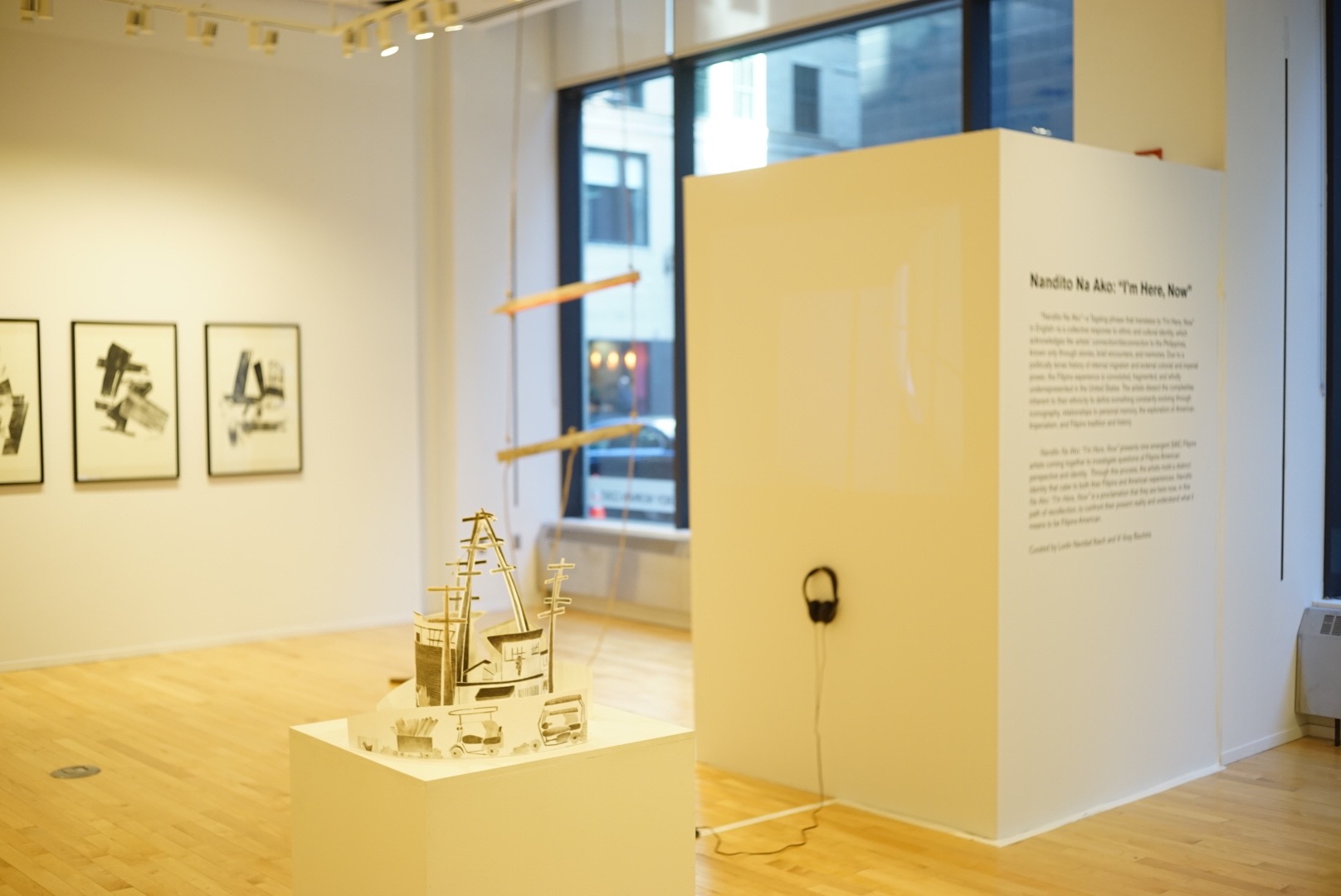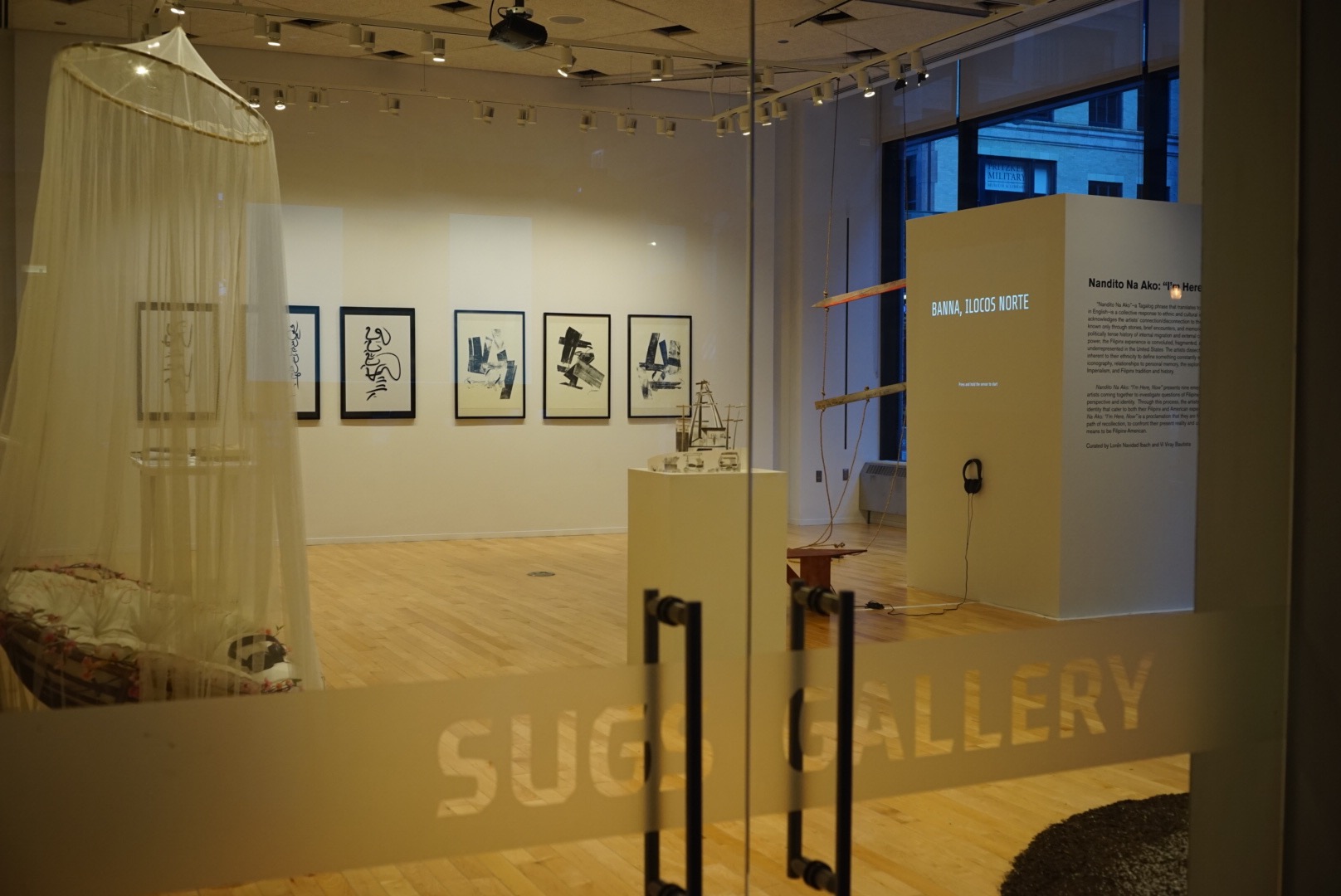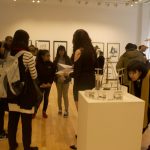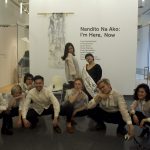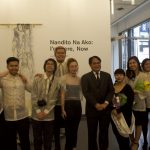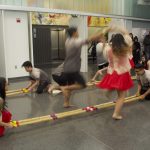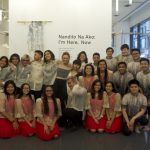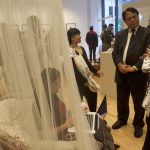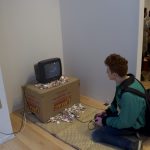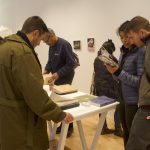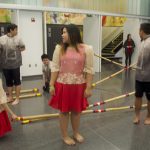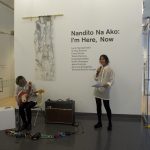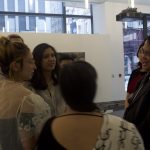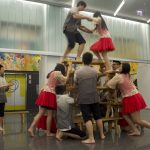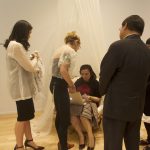Nandito na Ako: I’m Here, Now
2016
April 30 – May 19
LNC Gallery
Curators
Loren Ibach and Vi Viray Bautista
Contributing Artists
Loren Ibach, Vi Viray Bautista, Tristan Espinoza, Craig Stamatelaky, Kyrstin Rodriguez, Tewosret Vaughn, Cheryl Acuna, Jerico Domingo, and Anna Liza Evangelista
Exhibition Statement as Preserved in the SUGS/SITE Archives:
Nandito na Ako: I’m Here, Now presents nine SAIC Filipino artists coming together, for the first time, to collectively respond to the questions of Filipino-American Perspective and identity. Due to a complex history of internal migration and external colonial and imperial power, the Filipino experience is convoluted, fragmented, and in the United States, wholly underrepresented. The artists dissect the complexities inherent to their ethnicity to define something that constantly evolves through iconography, relationships to personal memory, and the exploration of American Imperialism, Filipino history, and its traditions. The artists, Loren Iback (BFA 2017), Vi Viray Bautista (BFA 2017), Tristan Espinoza (BFA 2017), Craig Stamatelaky (BFA 2018), Kyrstin Rodriguez (BFA 2016), Tewosret Vaughn (BFA 2015), Cheryl Acuna (BFA 2017), Jerico Domingo (BFA 2017), and Anna Liza Evangelista (BFA 2016) pay homage to their motherland, the Philippines.
Espinoza, Rodriguez, Stamatelaky, and Vaughn transform their sense of nostalgia into spatial connection to a place that is altered over time. Espinoza’s Banna, Illocos Norte is a video game projected onto translucent piña fabric that reconstructs childhood memories of growing up in Guam and the Philippines. The disconnection of time and memory is evoked through images that fade in and out of vision activated by a pressure sensor. Rodriguez’s Kamuning, QC is a layered, three-dimensional visual map from memories of her home in Quezon City from before she left for America. Her curiosity led to the discovery of Quezon City’s recent modernization that punctuated her romantic notion of her childhood. Rodriguez fluctuates between illustrating from memory and from what has changed. Vaughn’s series of photographs document her first hand experiences of the town her mother grew up in. This culminated in the re-imagination of the bridge her mother used to take to school. False Transcription (Marikina City) is a virtual performance stage set shown through a CRT – a television monitor referencing a period of time in Stamatelaky’s childhood memories – on top of a Balikbayan box. The television acts as a portal to explore a surreal perspective of the Filipino identity that is manipulated and distorted through Philippine media and Stamatelaky’s own family influences. In these four artworks, there exists a present need to connect to a part of the Philippines – a place that each artist felt displaced from and yet connected to. The works explore the disconnection between their American identity and the life of their immediate ancestors.
Evangelista’s Kamayan Style, a performative rendition of a Boodle Feast, and Viray Bautista’s Ikami to Itamu Kulitan print series reclaim traditions that have declines in contemporary Filipino culture. These works challenge the status quo of Filipinos assimilating to Westernized ideals. Evangelista and Viray Bautista’s work represent the desire that current generation of Filipino-/Americans have to preserve endangering parts of their culture. Evangelista’s banana leaf prints are displayed as a cultural vestige stemming from the communal act of the Boodle Feast. Viray Bautista’s prints address the importance of Kulitan, the Kapampangan people’s pre-colonial written language. She questions how meaning changes when the function of a language is lost, and when language transitions from a designed system of communication to an exotic spectacle or art form. Alongside Evangelista and Viray Bautista’s prints is a reading table incorporating relevant and supplementary material from Filipino artists and scholars in and outside of SAIC.
Ibach’s Portraits of the Artist is a screenprint on a piña fabric with manipulated faces imposed onto the undulating landscape of the Banaue rice terraces. The images permeate the intangible layers of history and erasure of identities of Filipino-/Americans. Bathala, a sculptural piece by Domingo which comprises of soil from the earth covered in white rice, represents the American colonization of the Philippines had gained its independence. Lastly Mahal Mo Ba Ako? (Halo Halo), Acuna’s interactive virtual archive of her family history, poses the question of how one rediscovers their ethnic identity when the connection has been lost?
“Nandito na Ako” – a Tagalog phrase that translates to “I’m Here, Now” in English – is a collective response to ethnic and cultural identity by acknowledging the connection/ disconnection to a place known only through stories, brief encounters, and memories. Through this process, the artists mold a distinct identity that cater to both their Filipino and American experiences. Nandito na Ako: I’m Here, Now, is a proclamation that they are here now, in this path of recollection, to confront their present reality and understand what it means to be Filipino-American.
Programs
Filipino Cultural Night
April 29, 4:00-6:00 PM
4:15pm | Sound Performance
By Hajime Mariano
4:30pm | Tinikling, Sayaw sa Bangko, Subli, and Pasikat
By Lane Technical College Prep High School’s Kapamilya Habang Buhay (KHB)
5:00pm | Kamayan Style
By Anna Liza De Leon Evangelista
Filipinos, the fourth largest growing ethnic group in Chicago, are widely dispersed throughout the city. “Nandito na Ako: I’m Here, Now” aims to utilize SAIC and SUGS as a platform to bring the Chicago Filipino community together through art. During the opening reception, the Leroy Neiman Center will be transformed into a place for SAIC’s first Filipino Cultural Event with performances from Filipino SAIC students Anna Liza De Leon Evangelista (BFA 2016) and Hajime Mariano (BFA 2016). In addition to the SAIC students, Lane Technical Prep High School’s Filipino cultural dance troupe “Kapamilya Habang Buhay (KHB)“ will be performing a rendition of the traditional Tinikling.
Evangelista’s Kamayan Style performance is a durational and communal performance that embodies the tradition of the Philippine Boodle Feast. The Boodle Feast is a symbol of camaraderie that was traditionally practiced during WWII in the Philippines, when military officers and enlisted men among different rankings would pile food on top of bananas leaves and the men would eat with their hands, “kamayan style” in a community feast. Viewers who wish to participate will be invited to sit at the table and eat Filipino food kamayan style. Evangelista uses performance as a framework for the audience’s tactile and sensual experience as a way to learn about a culture. It represents a phenomenon of the current Filipino diaspora embracing traditions and making it their own.
SAIC student Hajime Mariano will be doing a live sound performance influenced by Filipino musical elements. Aside from these SAIC student performances, Lane Technical Prep High School’s Filipino cultural dance troupe “Kapamilya Habang Buhay (KHB)“ will be performing a rendition of the national folk dance of the Philippines, “Tinikling”. The dance imitates the Philippine Tikling bird, which is known for the way it moves and dodges bamboo traps set by rice farmers. The dance involves performers dancing in between two bamboo poles that are constantly clashing together.
This Filipino Cultural Night is an invitation from the artists of the show to personally welcome and share a Filipino experience with the Chicago and SAIC community.
Exhibition Material
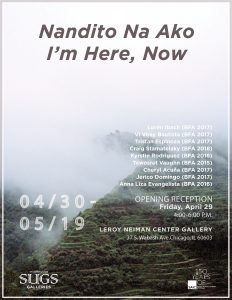
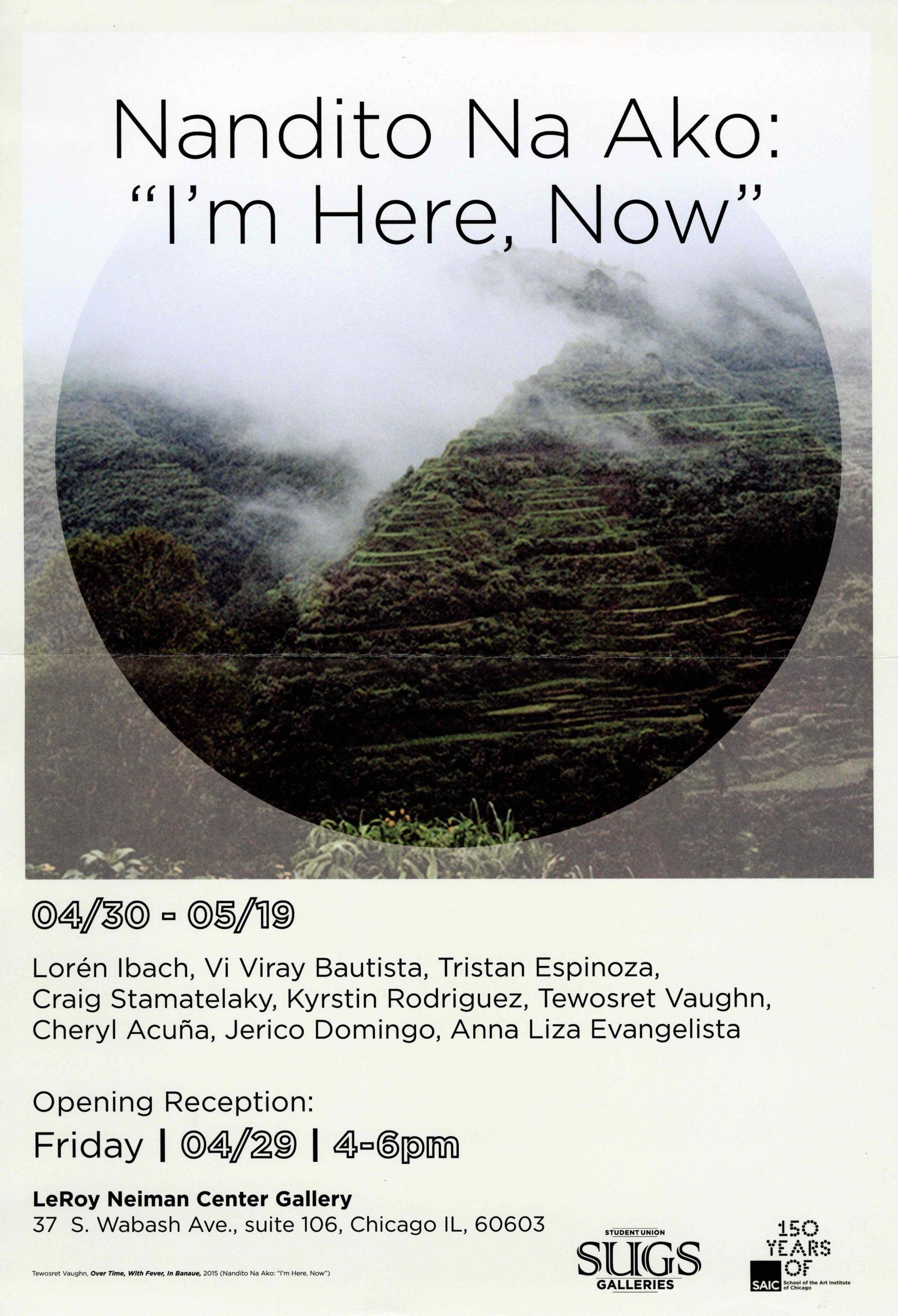
Nandito na Ako: I’m Here, Now was featured in SAIC’s E + D Spring 2015 newsletters.
This newsletter is stored in SAIC’s digital collection.
